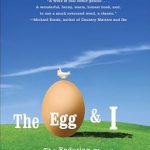Discover the vibrant world of Tlingit beadwork with “Painful Beauty: Tlingit Women, Beadwork, and the Art of Resilience.” This captivating book shines a light on the incredible artistry of Tlingit women, who have skillfully crafted colorful and intricate designs for over 150 years, transforming everyday items into stunning works of art. From moccasins to ceremonial pieces, this study explores how beadwork has not only served practical purposes but also played a vital role in preserving cultural identity and resilience during challenging times.
Author Megan Smetzer brings this often-overlooked art form to life, showcasing the voices of contemporary artists and the deep connections between their work and Tlingit heritage. “Painful Beauty” is essential reading for anyone interested in Indigenous art, cultural history, and the powerful narratives woven into every bead. Experience the beauty and strength of Tlingit women’s artistry and learn how these creative practices continue to inspire and empower communities today.
Painful Beauty: Tlingit Women, Beadwork, and the Art of Resilience (Native Art of the Pacific Northwest: A Bill Holm Center Series)
Why This Book Stands Out?
- Celebration of Heritage: “Painful Beauty” beautifully showcases the vibrant and intricate beadwork of Tlingit women, highlighting an essential aspect of Indigenous cultural expression.
- Historical Context: The book delves into over 150 years of Tlingit beadwork, revealing how this art form served as a means of cultural continuity during times of repression.
- Resilience and Empowerment: It emphasizes the strength, resilience, and power of Tlingit women, illustrating how beadwork allowed them to assert their identities and support tribal sovereignty.
- Contemporary Connections: Featuring insights from contemporary artists, the book links traditional practices to modern art, showcasing innovative expressions that push artistic boundaries.
- Rich Research: Through museum collections, photographs, and interviews, Megan Smetzer reframes beadwork as a vital site of historical negotiation and cultural transmission.
- First of Its Kind: This is the first dedicated study of Tlingit beadwork, contributing significantly to the literature on women’s artistic expressions in the Pacific Northwest.
Personal Experience
As I delved into Painful Beauty: Tlingit Women, Beadwork, and the Art of Resilience, I found myself not only captivated by the intricate details of the beadwork but also deeply moved by the stories woven into each piece. The book invites readers to explore a world where art is not merely decoration, but a powerful expression of identity, culture, and resilience. It made me reflect on my own experiences with creativity and how it often serves as a refuge during challenging times.
Reading about the Tlingit women and their beadwork practices resonated with my understanding of art as a means of storytelling. I couldn’t help but think about the crafts I’ve dabbled in—knitting, painting, and even journaling—each serving as a personal outlet to navigate my emotions and experiences. The way Megan Smetzer highlights the significance of historical context and cultural continuity reminded me of the importance of preserving our own narratives, no matter how small they may seem.
Here are a few insights that stood out to me and might resonate with you as well:
- Connection to Heritage: The stories of Tlingit women reclaiming their cultural practices through beadwork made me reflect on my own heritage and the artistic traditions of my ancestors.
- Resilience Through Art: Just as the Tlingit women used beadwork to assert their identities, I recognized moments in my life where art provided strength and a sense of purpose during difficult times.
- Community and Sharing: The communal aspect of beadwork, where pieces are created not only for personal use but also for community sharing, reminded me of the joy I find in crafting with friends and family.
- Innovation and Expression: The book inspires reflection on how we can push the boundaries of our own creative expressions, just as contemporary Tlingit artists do by infusing traditional practices with modern interpretations.
Overall, Painful Beauty is more than just a book about beadwork; it’s a celebration of resilience, creativity, and the power of art to connect us to our roots and to each other. I believe it will leave you with a renewed appreciation for the stories that art can tell and the enduring spirit of those who create it.
Who Should Read This Book?
If you’re someone who is passionate about Indigenous cultures, art, or women’s studies, then Painful Beauty: Tlingit Women, Beadwork, and the Art of Resilience is a must-read for you! This book uniquely shines a light on the rich tapestry of Tlingit beadwork and the incredible resilience of Tlingit women artists. Here’s why this book is perfect for you:
- Art Enthusiasts: If you appreciate art in all its forms, especially textiles and beadwork, this book provides an in-depth look at the intricate designs and cultural significance behind Tlingit beadwork.
- Students and Scholars: Those studying Indigenous studies, anthropology, or art history will find valuable insights and a fresh perspective on the intersections of art, culture, and identity in the Tlingit community.
- Women’s Rights Advocates: For anyone interested in women’s empowerment and resilience, this book showcases how Tlingit women have used beadwork as a means of cultural expression and economic independence.
- Cultural Historians: If you’re keen on understanding the historical contexts of Indigenous artforms, this book delves into how beadwork has served as a site of negotiation and survival amidst cultural repression.
- Artists and Creatives: Contemporary artists can draw inspiration from the innovative practices highlighted in this book, encouraging a deeper appreciation for the historical roots of their craft.
This book not only offers a rich historical narrative but also connects readers with contemporary artists and their journeys, making it a unique addition to any bookshelf. Whether you’re looking to deepen your understanding of Indigenous art or simply want to be inspired by the stories of resilient women, Painful Beauty is the perfect choice for you!
Painful Beauty: Tlingit Women, Beadwork, and the Art of Resilience (Native Art of the Pacific Northwest: A Bill Holm Center Series)
Key Takeaways
Here are some of the most important insights and benefits you can expect from reading Painful Beauty: Tlingit Women, Beadwork, and the Art of Resilience:
- Historical Context: Gain a deeper understanding of the historical significance of Tlingit beadwork and how it has been a vital form of cultural expression for over 150 years.
- Women’s Resilience: Discover how Tlingit women used beadwork as a means of asserting their identity, cultural continuity, and resilience in the face of repression.
- Artistic Innovation: Learn about the ways in which beadwork allowed women to innovate artistically while honoring their clan histories and environmental connections.
- Cultural Significance: Appreciate the multifaceted roles of beadwork, from ceremonial uses to economic opportunities, and its importance in supporting tribal sovereignty.
- Contemporary Perspectives: Explore the works of contemporary Tlingit artists who draw inspiration from historical practices, pushing the boundaries of traditional art forms.
- Interviews and Insights: Benefit from firsthand accounts and interviews with artists and elders that provide personal insights into the significance of beadwork in Tlingit culture.
- Expanded Literature: Contribute to your understanding of women’s artistic expressions on the Northwest Coast, as this book is a pioneering study in this area.
Final Thoughts
“Painful Beauty: Tlingit Women, Beadwork, and the Art of Resilience” is an enlightening exploration of the rich tapestry of Tlingit beadwork, showcasing the incredible resilience and creativity of Tlingit women artists over the past 150 years. This book not only highlights the intricate designs and vibrant colors of beadwork but also delves into its profound significance in preserving cultural identity and continuity amidst historical repression.
Megan Smetzer masterfully reframes beadwork as a powerful medium of artistic expression and cultural negotiation, illustrating how these women have used their craft to assert their identities, support tribal sovereignty, and pass down invaluable cultural knowledge. With contributions from contemporary Tlingit artists, the book serves as a vital link between past and present practices, enriching our understanding of Indigenous art and its relevance today.
- Explores the historical and contemporary significance of Tlingit beadwork.
- Highlights the resilience and strength of Tlingit women artists.
- Connects beadwork to broader themes of cultural identity and sovereignty.
- Features insights from artists and elders, adding depth and personal narratives.
This book is not just a study of an art form; it is a celebration of cultural resilience and a testament to the power of creativity. Whether you’re an art enthusiast, a student of Indigenous cultures, or simply someone who appreciates beautifully crafted works, “Painful Beauty” is a must-have addition to your collection.
Don’t miss out on the opportunity to deepen your understanding of Tlingit culture and art. Purchase your copy today!





